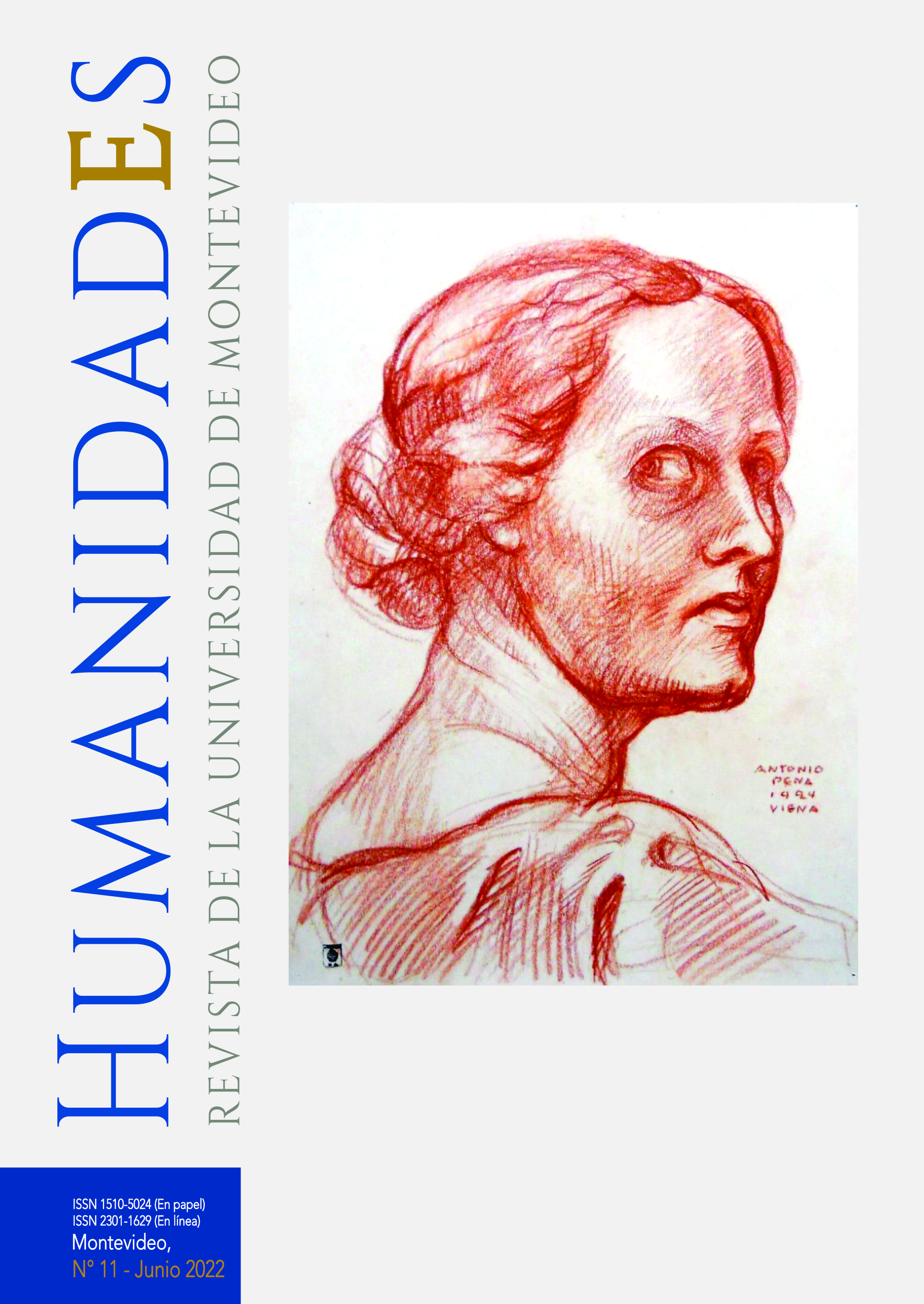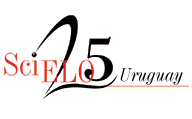Onetti, entre Lavanda y Montevideo. (La construcción análoga de la ciudad)
DOI:
https://doi.org/10.25185/11.7Palabras clave:
Ciudad análoga, Pseudo-referente real, Zona urbana, Lugares de la memoria, Rossi, OnettiResumen
La configuración del espacio en la obra del escritor uruguayo Juan Carlos Onetti recuerda ciertos sistemas constructivos aplicados en el diseño urbano, como el concepto de ciudad análoga acuñado por el arquitecto Aldo Rossi, según el cual el espacio urbano puede ser construido a través de la superposición de distintas posibilidades arquitectónicas, tanto imaginarias como reales, las cuales permiten la creación de una nueva realidad aún no existente. Aplicando dicho concepto urbano, este artículo analiza la construcción del espacio en Dejemos hablar al viento, una de las obras de la madurez de Onetti, publicada en 1979. Lavanda, espacio urbano que ambienta la trama de la primera parte de la obra, es configurada a través de referencias que remiten a la capital uruguaya, Montevideo, que junto con topónimos adicionales de referencia ambigua, establecen entre ambas una relación análoga, modelo constructivo que ofrece nuevas perspectivas de lectura.
Descargas
Citas
Aínsa, Fernando. “Del Topos al Logos, «Grafías» del Espacio en Perspectiva”. Todas as Letras, nº 4 (2002): 59-67.
Aínsa, Fernando. Del topos al logos. Propuestas de Geopoética. Madrid: Iberoamericana - Vervuert, 2006.
Barrios Pintos, Aníbal. Montevideo. Los barrios I. Montevideo: Editorial Nuestra Tierra, 1971.
Benedetti, Mario. Primavera con una esquina rota. Madrid: Alfaguara, 1982.
Benedetti, Mario. Rincón de haikus, Madrid: Visor, 1999; México: Alfaguara, 1999.
Buck-Morss, Susan. The dialectics of seeing: Walter Benjamin and the Arcades project. Cambridge: MIT Press, 1989.
Espino, Cristina. “Santa María y la nostalgia por Montevideo”. Relaciones, nº 86 (2004). http://www.chasque.net/frontpage/relacion/0405/index.htm
Kohan, Martín. Zona urbana. Ensayo de lectura sobre Walter Benjamin. Buenos Aires: Grupo Editorial Norma, 2004.
Komi, Christina. Recorridos urbanos. La Buenos Aires de Roberto Arlt y Juan Carlos Onetti. Madrid: Iberoamericana - Vervuert, 2009.
Lynch, Kevin. The Image of the City. Cambridge: The M.I.T. Press, 1960.
Onetti, Juan Carlos. La vida breve. Barcelona: Editora y Distribuidora Hispano Americana (EDHASA), 1980.
Onetti, Juan Carlos. Dejemos hablar al viento. México: Editorial Artemisa, 1985.
Pimentel, Luz Aurora. El espacio en la ficción. Ficciones espaciales. La representación del espacio en los textos narrativos. México: Siglo XXI editores, 2010.
Prego, Omar y María Angélica Petit. Juan Carlos Onetti o la salvación por la escritura. Madrid: Sociedad General Española de Librería, 1981.
Rossi, Aldo. “La arquitectura análoga”. 2C: Construcción de la ciudad, nº 2, (1975): 8-11.
Solotorevsky, Myrna. “Referentes ficticios y «pseudo-referentes reales» en «Santa María de las flores negras»”, de Hernán Rivera Letelier”. Hispamérica, nº 97 (2004): 17-28.
Vargas Llosa, Mario. “Huellas de Faulkner y Borges en Juan Carlos Onetti.” Monteagudo, 3a Época, no 14 (2009): 15-26.
Verani Hugo J. Onetti: el ritual de la impostura. Caracas: Monte Ávila Editores, 1981.
Verani Hugo J. “Onetti y el palimpsesto de la memoria”. En Actas del IX Congreso de la Asociación Internacional de Hispanistas 18-23 agosto 1986. Volumen II, Berlín, Frankfurt am Main, Vervuert, 1989, 725-732. Alicante: Biblioteca Virtual Miguel de Cervantes, 2016. http://www.cervantesvirtual.com/nd/ark:/59851/bmc5b228
Vitale, Ida. “El otro Montevideo”. En Montevideo de puño y letra, Jorge Burel, 121-127. Montevideo: Editorial Fin de Siglo, 1992.
Vitale, Ida. “Lavanda y un nuevo símbolo onettiano”. Texto Crítico, Centro de Investigaciones Lingüístico-Literarias. Universidad Veracruzana, nº 18-19 (1980): 70-72. http://cdigital.uv.mx/handle/123456789/6934
Publicado
Cómo citar
Número
Sección
Licencia
Derechos de autor 2022 Aarón Lubelski

Esta obra está bajo una licencia internacional Creative Commons Atribución 4.0.




























 Esta obra está bajo una licencia de
Esta obra está bajo una licencia de 